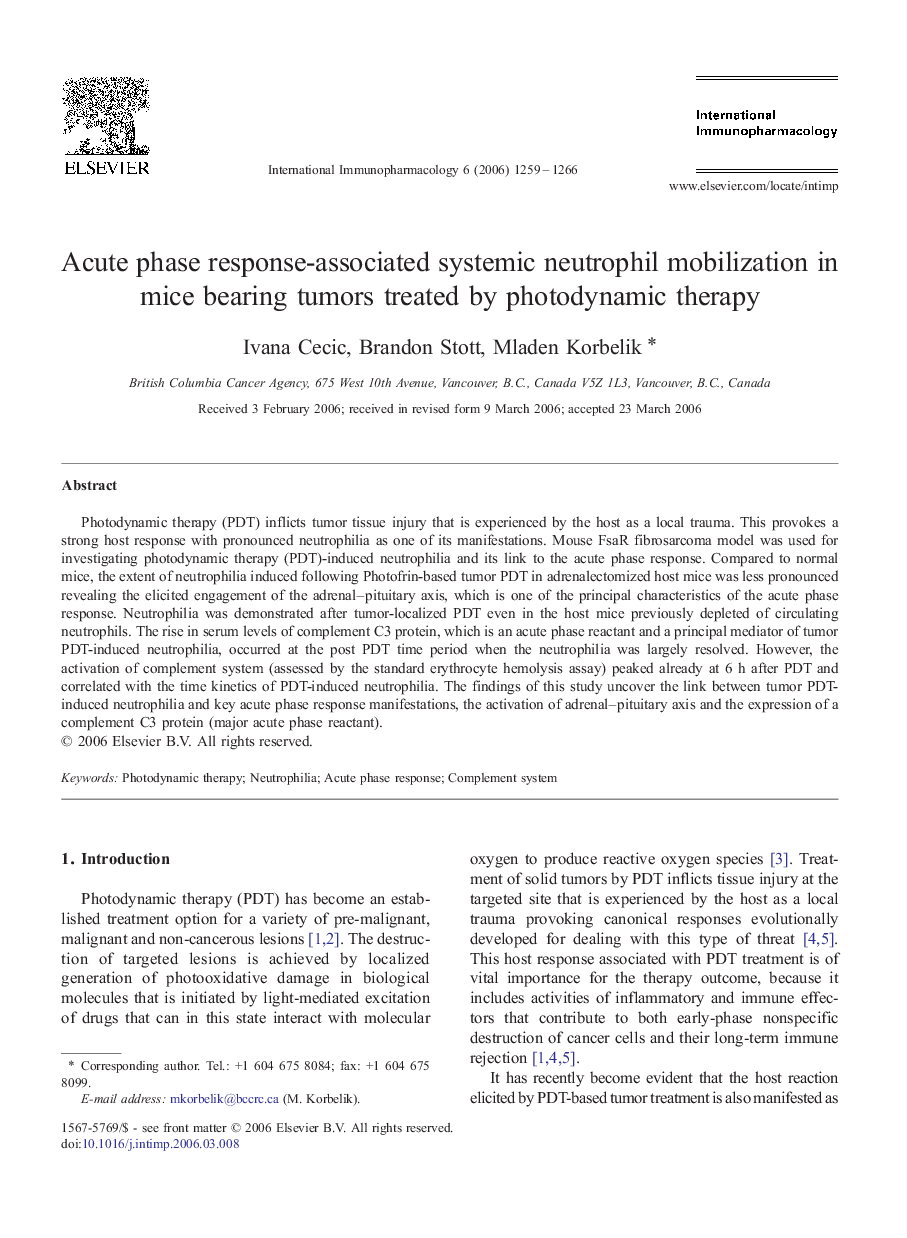| Article ID | Journal | Published Year | Pages | File Type |
|---|---|---|---|---|
| 2542033 | International Immunopharmacology | 2006 | 8 Pages |
Photodynamic therapy (PDT) inflicts tumor tissue injury that is experienced by the host as a local trauma. This provokes a strong host response with pronounced neutrophilia as one of its manifestations. Mouse FsaR fibrosarcoma model was used for investigating photodynamic therapy (PDT)-induced neutrophilia and its link to the acute phase response. Compared to normal mice, the extent of neutrophilia induced following Photofrin-based tumor PDT in adrenalectomized host mice was less pronounced revealing the elicited engagement of the adrenal–pituitary axis, which is one of the principal characteristics of the acute phase response. Neutrophilia was demonstrated after tumor-localized PDT even in the host mice previously depleted of circulating neutrophils. The rise in serum levels of complement C3 protein, which is an acute phase reactant and a principal mediator of tumor PDT-induced neutrophilia, occurred at the post PDT time period when the neutrophilia was largely resolved. However, the activation of complement system (assessed by the standard erythrocyte hemolysis assay) peaked already at 6 h after PDT and correlated with the time kinetics of PDT-induced neutrophilia. The findings of this study uncover the link between tumor PDT-induced neutrophilia and key acute phase response manifestations, the activation of adrenal–pituitary axis and the expression of a complement C3 protein (major acute phase reactant).
